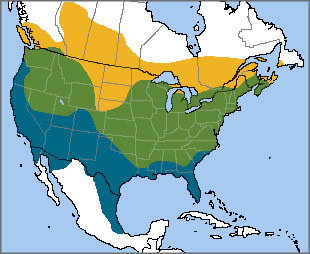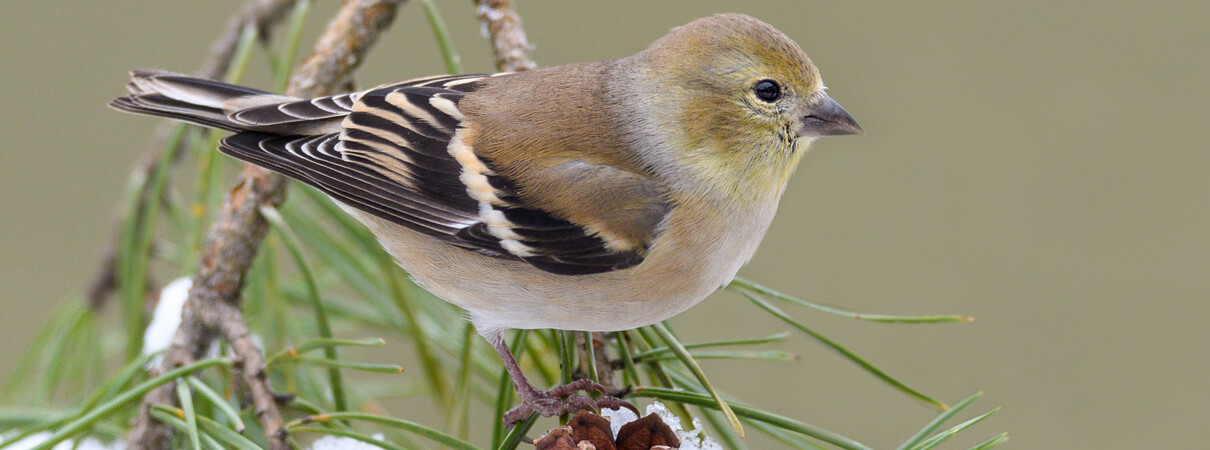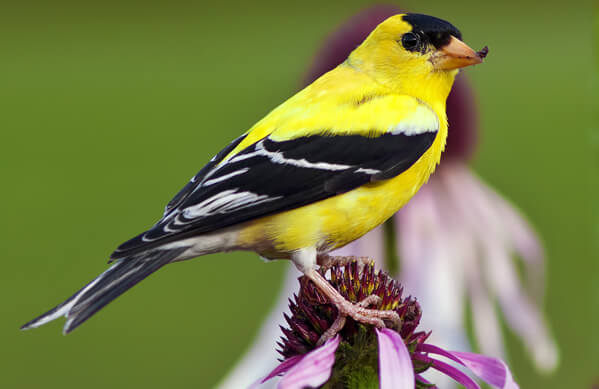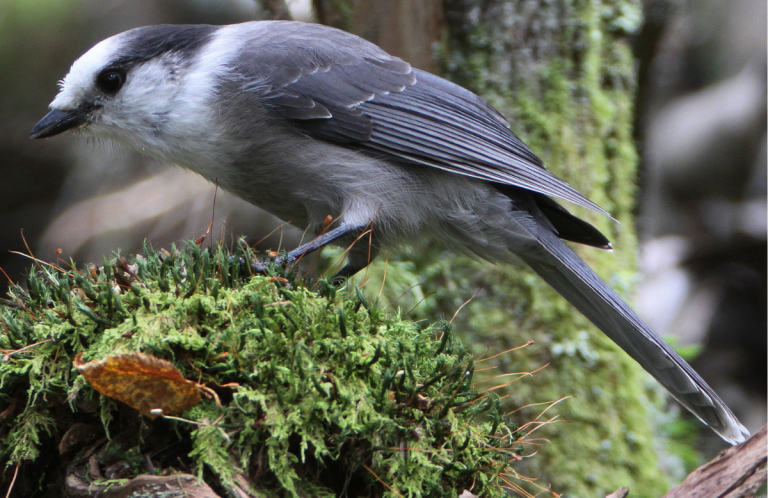 "The goldfinch is an active little bird, always in the best of spirits," observed noted naturalist Arthur Cleveland Bent early in the 20th century. "It has a definite personality exemplifying light-hearted cheerfulness, restlessness, sociability, and untiring activity." Famed ornithologist Roger Tory Peterson made a similar observation: "The responsibilities of life seem to rest lightly on the Goldfinch's sunny shoulders."
"The goldfinch is an active little bird, always in the best of spirits," observed noted naturalist Arthur Cleveland Bent early in the 20th century. "It has a definite personality exemplifying light-hearted cheerfulness, restlessness, sociability, and untiring activity." Famed ornithologist Roger Tory Peterson made a similar observation: "The responsibilities of life seem to rest lightly on the Goldfinch's sunny shoulders."
Unlike more rarely seen relatives such as the Pine Siskin and Evening Grosbeak, this widespread finch is a familiar sight year round, although most colorful in the breeding season. It only begins to nest late in the summer, later than almost any other North American songbird. Why?
The Secret is the Seed
The American Goldfinch only begins nesting from late July to September, when most other songbirds are winding down breeding activity. This timing coincides with the abundance of their chief food source — seeds — in the late summer months. Almost any sort of seed will do. Thistles are favored, but this goldfinch readily feeds on a wide variety of weed, flower, tree, and grass seeds, as well as buds, sap, berries, and, less commonly, insects.
This species has several adaptations suited to its granivorous (seed-eating) diet, including a strong, conical bill that easily gathers and splits seed, and dexterous legs and feet, which allow the American Goldfinch to easily scramble up and down plant stems and hang from seedheads while feeding, thereby accessing seed sources unavailable to other birds.
Quick-Change Artist
A male American Goldfinch in breeding plumage is easy to recognize: a bright, sunny yellow with jet-black wings and cap. Like other common feeder birds such as the Northern Cardinal or Dark-eyed Junco, the American Goldfinch is a sexually dimorphic species, with the female much drabber than the eye-catching male. In the goldfinch's case, this difference is especially apparent during the nesting season. In the winter, both sexes look much more alike, with feathers of brown, olive, and dull yellow-green, accented by buff or white markings. This noticeable change in the male's plumage leads some people to believe that American Goldfinches are absent in the winter, when in fact they may still be around — just in duller plumage! The males' molt from drab to brilliant in the spring makes it seem as if they just appeared from nowhere.
Four subspecies of American Goldfinch are recognized, separated by size, wing and tail markings, and color intensity. Many southern populations of this species are resident, but northern populations are short-distance migrants, traveling during the day in sizable flocks. In winter, flocks often wander nomadically in search of food, and are common visitors at backyard birdfeeders.
American Goldfinches have an undulating flight, during which they utter contact calls that sound like: po-ta-to-chip or perchicoree-perchicoree. Their song is a lively, high-pitched series of trills and twitters, interspersed with sad-sounding swee notes. The species name tristis is Latin for 'sorrowful,' based on this uncharacteristically mournful note. Listen to the flight call and song here:
(Audio of American Goldfinch flight calls by Martin St-Michel XC390608, accessible at www.xeno-canto.org/390608; Audio of American Goldfinch song by Patrick Turgeon XC192078, accessible at www.xeno-canto.org/192078)
Cowbird-Proof Nester
American Goldfinches are "cowbird-proof." When Brown-headed Cowbirds parasitize their nests, any cowbird chicks that hatch usually die of starvation, since the goldfinch hosts feed regurgitated seeds to their young — a diet that fails to meet a cowbird's nutritional requirements.
Like the Sprague's Pipit and Eastern Meadowlark, American Goldfinch males court females through flight displays and song. When a female accepts a male as a mate, each flies in wide circles while the male sings. The male then selects a territory, often close to several other goldfinch pairs in a loose colony. The close proximity of the pairs may help in defense against predators.

Female American Goldfinch in winter plumage, FotoRequest, Shutterstock
Since they begin nesting late, American Goldfinches usually only produce one brood of four to six eggs per season. The female builds the nest, a tightly woven cup of plant fibers and spider webs lined with thistle down, in a tree or shrub, usually 15 to 17 feet high. American Goldfinch nests are so well-made that they have even been known to hold water.
While the female incubates the eggs by herself, the male feeds the female on the nest after the chicks hatch. The female, in turn, feeds her chicks. As the nestlings grow, both parents feed them directly, but the male gradually takes over feeding the young birds, attending them for up to three days post-fledging.
A Household Name
Human activity has largely benefited the American Goldfinch, since deforestation creates the open, weedy areas that are its preferred habitat and chief source of seed. The species features widely in art and literature, is the state bird of Iowa, New Jersey, and Washington, and appears in gardens not only at feeders but also on the seedheads of popular garden plants such as Purple Coneflower and Zinnia. Yet even human-dominated landscapes favored by many goldfinches include a variety of threats that affect this and other birds, from predation by outdoor cats to pesticide use, to collisions with cars, wind turbines, and glass.
ABC is taking on these threats through a number of programs. Our Cats Indoors program advocates for responsible pet ownership, while our Pesticides program works to block or restrict dangerous pesticides and other toxic chemicals in homes, gardens, and agriculture. We lead the way in providing solutions that reduce bird mortality at windows, communications towers, powerlines, and wind turbines.
Donate to support ABC's conservation mission!



















































